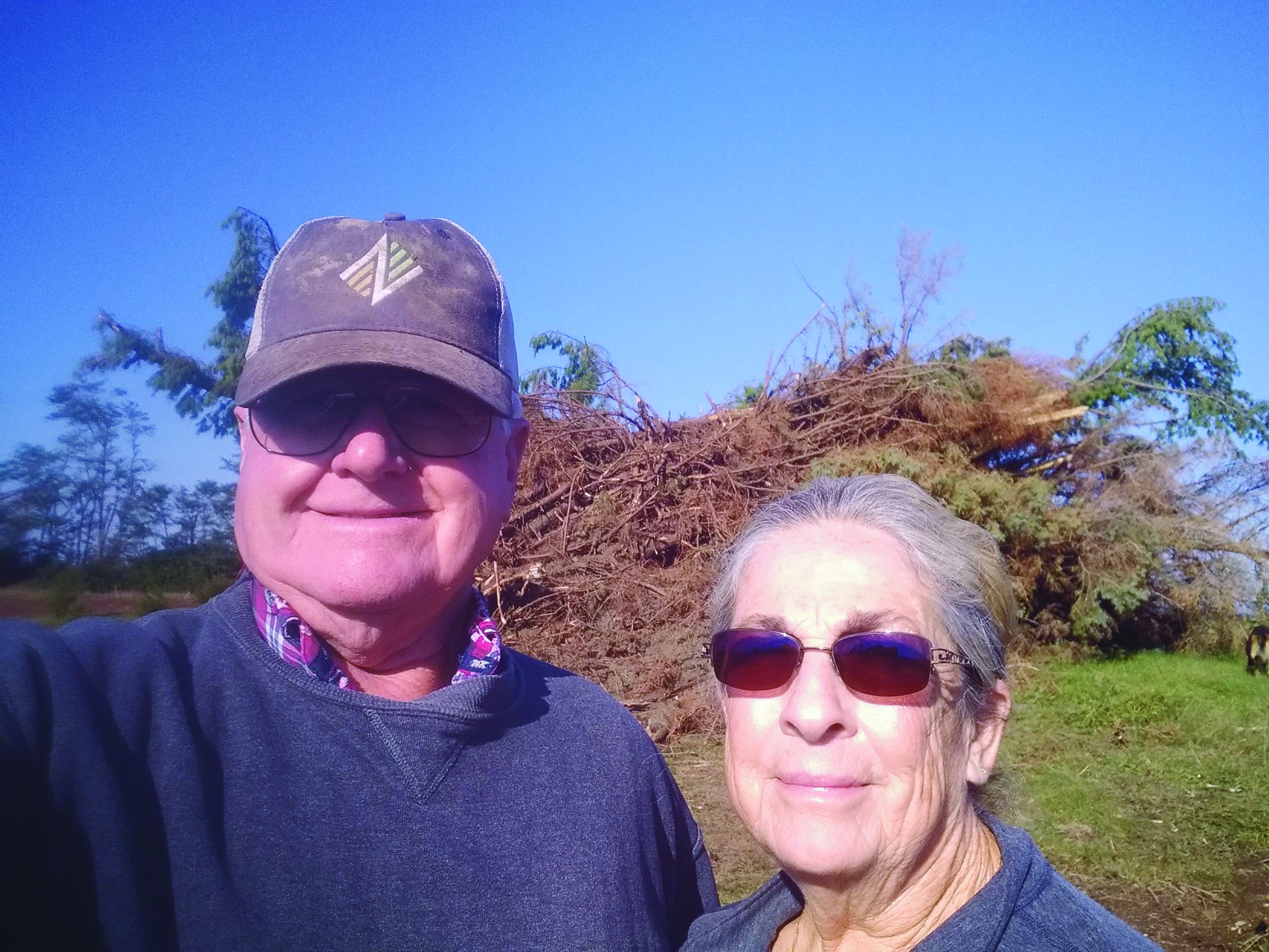Faith and Farming: Droughts, derecho, COVID-19 and trade with China make 2020 a tough year
October 14, 2020

by Kelly Mescher Collins
Patrick Gannon was driving home to the family farm north of Colfax when the Aug. 10 derecho blew through.
“I didn’t even know it was going to rain,” said Gannon, a member of St. Mary/Holy Cross Parish in Elkhart. “I was in Newton and it was really black to the west. I said to some folks, ‘It must be raining in Des Moines.’ There was only a 20 percent chance of rain.”
After leaving Newton, Gannon and his grandson encountered high winds and trees blowing on the highway, forcing them to circle around to different roads to find an unblocked route home.
“It was a little scary,” Gannon said.
In his more than 40 years of farming, Gannon has experienced a number of weather events -- this was his first derecho. His corn crop and pine trees bore the brunt of the more than 70 mph winds.
“It just flattened the corn to where it was not mechanically harvestable,” Gannon said. “We have around 1,000 acres of corn and we destroyed 300 acres of it, which would be about 60,000 bushels. We have federal crop insurance and they came out and said, ‘You’re not going to be able to harvest it.’”
The 60,000 bushels of corn would typically be valued at about $180,000.
Three grain buildings on Gannon’s property were also destroyed by the high winds.
Yet, he feels fortunate compared to many farmers he knows. Their machine sheds were lifted off the foundation by the derecho.
“And it didn’t just fly off, it just dropped on their equipment,” he added, noting the combine and tractor damage. “The John Deere store is really busy trying to restore equipment to get through harvest.”
John Splendore, of St. Patrick Parish in Perry, was out of town driving truck for HyLine, a poultry breeder based in Dallas Center, when the derecho hit.
“Most farmers have federal crop insurance and that’s going to help considerably,” said Splendore, who added that breaking even is a best-case scenario.
Before the derecho, the drought had already been weighing on farmers throughout western Iowa.
“You could tell that it was going to be a lower yield even before the storm came through. Of course, it depends if you have early beans or late beans as far as how bad the drought is going to affect them,” Splendore added, predicting that soybean bushels per acre would be about half the size. “My guess is 20-30 bushels to the acre. Normal around here is 45-65 – that’s an average yield.”
John Freund of Ss. Peter & Paul Parish in Atlantic, said the drought will negatively impact harvest.
“We’ll pobably be at 50 to 55 percent of yields from last year,” Freund said. “There’s increased costs of production,” he added. “We won’t cover our production costs this year.”
Freund’s family farming operation also has feed lot cattle, which took a direct hit from COVID-19, due to the closure of restaurants and drop in travel.
“It’s been a huge capital drain on our industry....” Freund said. “Beef is a meat of celebration or travel. There’s no travel and people are scared, and when they don’t move they don’t spend money on beef. We haven’t shown a profit of any lot of cattle since mid-March.”
Typically, cattle producers have a two week window to market the animals, Freund said. COVID-19 threw everything off.
“When they shut everything down, you can imagine what it does to cash flow,” Freund continued. “Animals get too big - you can’t stop feeding them. So then they become unmerchanable to hotels and restaurants.”
The beef industry quickly shifted from 40 percent retail to 75 percent retail when restaurant and travel sales nosedived, he said.
“It’s a huge shift for any industry and we had to do that overnight, and you know that doesn’t happen overnight,” Freund added.
Pork producers also struggled with product overflow. Stories emerged of farmers who felt forced to euthanize because there was no market for their animals.
“You look at the devastation and you think, ‘I’m not going to have money for these crops or sell these pigs,’” Gannon said. “But I always come back to the fact that God never lets you have more than you can handle. And I always think, ‘We’ll be OK. God will take care of us.’”
Farmers were already feeling the pinch even before COVID-19, droughts and the derecho because of trade disputes with China, leaving “prices... fairly pressured,” Splendore said.
“I guess my faith gives me the strength not to worry about different problems that might arise,” Splendore continued. “I think it’s God’s will and he’s going to take care of all things. I might still suffer a little bit, but we’re all gonna get by and he’ll lead us in the right direction.”
The three men agree - they don’t know how they’d handle the ups and downs of farming without their faith.
“A lot of people say farming is the biggest gamble in the world, but if you have faith it’s not – it averages out every time,” Gannon added.
Farming and faith go hand-in-hand, said Freund.
“It’s in our prayers every day,” Freund said. “You have to thank the good Lord for the blessings that you had, like last year, and also asking for help on years like this.”
Food production is not on farmers alone - God is their co-creator.
“We just borrow his resources to produce something so we can survive,” Freund continued. “We borrow his land and his weather to produce for the rest to eat, so we have to be good stewards of it. He gives us all the tools - we’ve just got to put it together.”